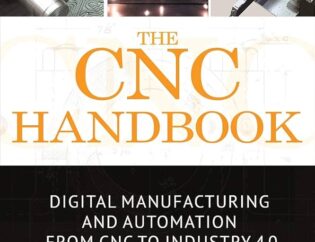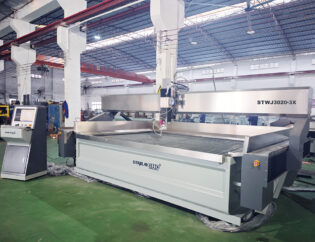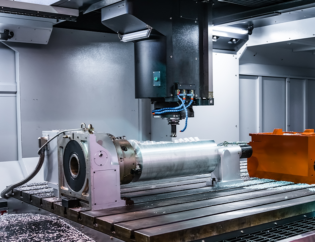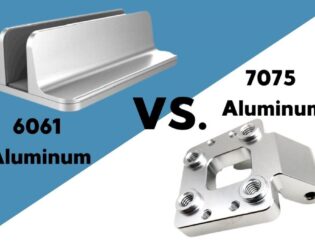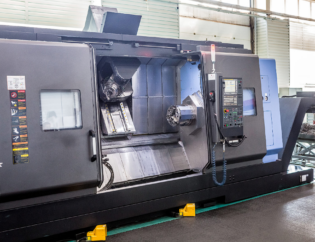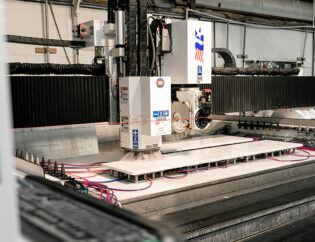CNC machining is a cornerstone of modern manufacturing, revolutionizing how components are produced with precision and efficiency. Understanding the various types of CNC machining processes is essential for engineers, designers, and manufacturers alike. This guide will delve into the intricacies of CNC machining, exploring its diverse applications and the unique advantages each type offers.
Readers can expect to gain a comprehensive overview of CNC milling, turning, and routing, among other techniques. Each section will highlight the specific capabilities, ideal use cases, and potential limitations of these machining types. By the end of this guide, you will be equipped with the knowledge to make informed decisions about CNC machining for your projects.
Whether you are a seasoned professional or a newcomer to the field, this guide aims to enhance your understanding of CNC machining. With clear explanations and practical insights, you will discover how to leverage these technologies to optimize production processes and improve product quality. Prepare to explore the fascinating world of CNC machining and unlock its potential for your manufacturing needs.
Comprehensive Guide to CNC Machining Types
In the ever-evolving world of manufacturing and engineering, CNC machines stand at the forefront of innovation, offering unparalleled precision and versatility. But with a myriad of types available, from milling and grinding to plasma cutting machines, how do you determine which one is the perfect fit for your needs? Whether you’re a seasoned machinist or a curious beginner, understanding the nuances between different CNC machines and their axes is crucial to optimizing performance and achieving your project goals. This comprehensive guide will delve into the various types of CNC machines, explore their applications in industries like woodworking and aerospace, and provide insights into selecting the best machine for your specific tasks. Ready to uncover which CNC machine could revolutionize your workflow? Let’s dive in and find out!
Technical Features of CNC Machines
CNC machines are equipped with various technical features that enhance their functionality and efficiency. Below is a comparison table highlighting some of the key technical specifications of different CNC machines.
| Feature | CNC Milling Machine | CNC Lathe Machine | CNC Router Machine | CNC Plasma Cutter | CNC Laser Cutter |
|---|---|---|---|---|---|
| Axis Count | 3 to 5+ | 2 to 3+ | 3 | 2 | 2 |
| Material Compatibility | Metals, Plastics | Metals, Wood | Wood, Plastics | Metals | Metals, Plastics |
| Precision | ±0.002″ | ±0.001″ | ±0.005″ | ±0.015″ | ±0.005″ |
| Cutting Method | Rotary Cutting | Rotational Cutting | Rotary Cutting | Plasma Arc | Laser Beam |
| Typical Applications | Engine Parts, Gears | Cylindrical Parts | Furniture, Signage | Metal Fabrication | Engraving, Cutting |
| Setup Time | Moderate | Low | Low | Low | Low |
| Cost Range | $2K – $500K+ | $2K – $500K+ | $300 – $100K | $5K – $100K+ | $200 – $600K+ |
Types of CNC Machines
CNC machines can be classified into various types based on their functionality and applications. Below is a comparison table summarizing the different types of CNC machines and their primary uses.
| CNC Machine Type | Description | Common Uses |
|---|---|---|
| CNC Milling Machine | Uses rotary cutters to remove material from a workpiece. | Engine parts, gears, complex shapes. |
| CNC Lathe Machine | Rotates the workpiece while cutting tools remain stationary. | Cylindrical parts, shafts, bolts. |
| CNC Router Machine | Cuts and engraves materials like wood and plastic. | Furniture, signage, decorative items. |
| CNC Plasma Cutter | Uses a plasma arc to cut through electrically conductive materials. | Metal fabrication, automotive parts. |
| CNC Laser Cutter | Employs a focused laser beam for cutting and engraving. | Jewelry, signage, intricate designs. |
| CNC Drilling Machine | Creates precise holes in various materials. | PCB manufacturing, cabinetry. |
| CNC Grinding Machine | Uses abrasive wheels to achieve a smooth finish on workpieces. | Tool making, surface finishing. |
| CNC Waterjet Cutter | Utilizes high-pressure water jets to cut through materials. | Stone, glass, and delicate materials. |
| CNC Electrical Discharge Machine (EDM) | Uses electrical sparks to erode material for precise machining. | Tool and die making, aerospace parts. |
| CNC 3D Printer | Adds material layer by layer to create 3D objects. | Prototyping, custom parts. |
| CNC Pick and Place Machine | Lifts and places electronic components on circuit boards. | PCB assembly, electronics manufacturing. |
Insights into CNC Machining
CNC machining has transformed manufacturing processes across various industries. The precision and efficiency of CNC machines allow for the production of complex parts that meet stringent quality standards. For instance, in the aerospace industry, CNC machines are essential for creating components that require high durability and precision.
In woodworking, CNC routers enable artisans to carve intricate designs into furniture and decorative items, enhancing both functionality and aesthetics. Similarly, CNC milling machines are widely used in metalworking to produce engine parts and other critical components.
The versatility of CNC machines extends to their ability to work with various materials, including metals, plastics, and composites. This adaptability makes them indispensable in sectors such as automotive, medical, and consumer electronics.
Conclusion
CNC machines are vital tools in modern manufacturing, offering precision, efficiency, and versatility. Understanding the different types of CNC machines and their applications is crucial for selecting the right equipment for your specific needs. Whether you are involved in woodworking, metal fabrication, or electronics manufacturing, there is a CNC machine tailored to your requirements.
As you explore the world of CNC machining, consider the insights provided in this guide to make informed decisions. For more information on CNC machines, you can visit resources like www.theengineerspost.com, www.cncsourced.com, www.3erp.com, www.cncmasters.com, and shop.machinemfg.com.
FAQs
Related Video
Watch a video about “cnc machining types”
What are the different types of CNC machines available?
CNC machines come in various types tailored to specific tasks, including CNC milling machines, CNC lathes, CNC routers, CNC plasma cutters, CNC laser cutters, and CNC grinding machines.
How do the number of axes affect the functionality of a CNC machine?
The number of axes in a CNC machine directly affects its functionality by determining the complexity and precision of the parts it can produce. More axes allow for intricate cuts without repositioning the workpiece.
Which CNC machine is best for woodworking?
The best CNC machine for woodworking depends on the scale of the projects. For hobbyists, smaller models like CNC routers are ideal, while professionals may prefer larger, more robust machines.
What are the benefits of using CNC machines in manufacturing?
CNC machines offer high precision, efficiency, versatility, and the ability to produce complex parts consistently, making them essential in various manufacturing sectors.
Are CNC machines suitable for small businesses?
Yes, CNC machines can be highly suitable for small businesses, as they enhance productivity, reduce costs, and improve product quality, making them a valuable investment.


